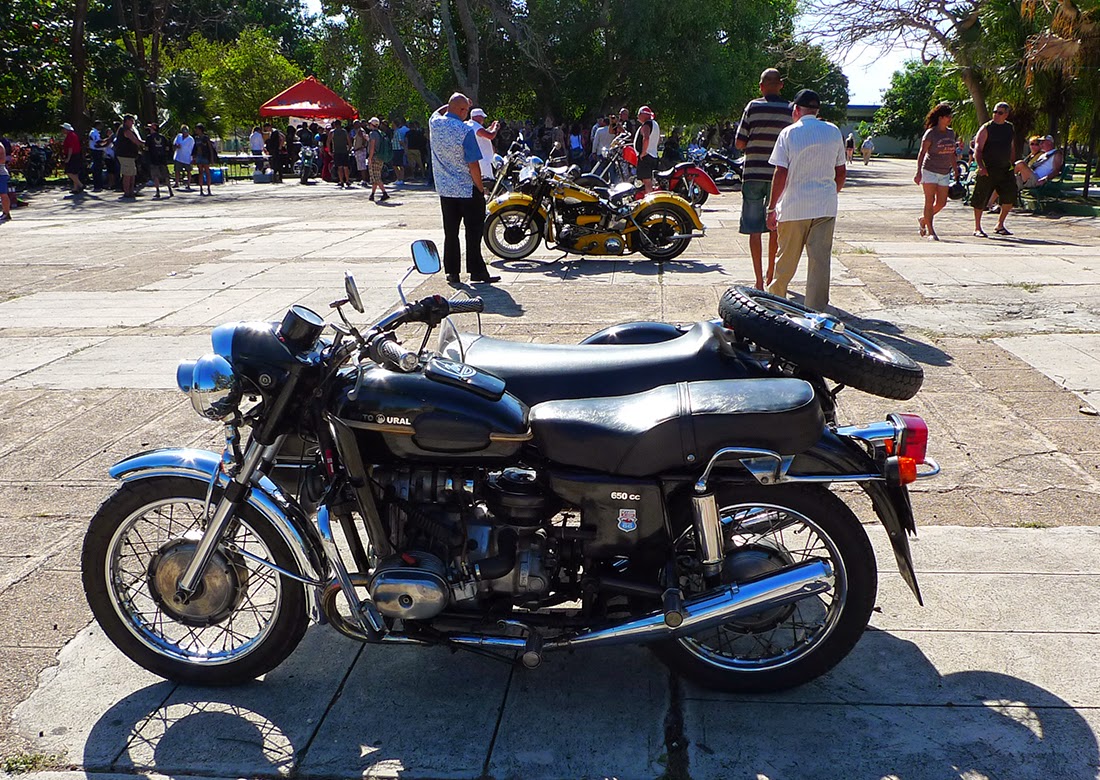 |
| The Ural: Three wheels on the ground, another as spare. |
Yet to someone who hadn't run across a Ural before, the big three-wheeler was worth a closer look.
It wasn't, I think, as old as it first appeared. Based on the pre-war BMW R 71 – see the horizontally opposed cylinders? – the Ural has had the same basic design since production began in 1942 in Irbit, at the edge of the Ural Mountains. The sidecar-equipped bikes were intended to give the Red Army mobility against fast-moving German troops (themselves sometimes on BMW three-wheelers).
 |
| A mobile Red Army. IMZ-Ural photo. |
.
This one could have been made any time before the 650 cc Ural engine was upgraded to a 750 in about 2000. Probably, however, it dated to before 1989, when Cuba lost the support of a dissolving Soviet Union.
With its stability, traction (both rear wheels are driven) and remarkable cargo capacity, the Ural is known as a near-unstoppable workhorse, well suited to rough Russian (and Cuban) roads. Some 3.3 million have been built over seven decades for both home and export markets, and production continues, though today in fairly limited numbers, at the now privately owned IMZ-Ural factory in Irbit.
This one could have been made any time before the 650 cc Ural engine was upgraded to a 750 in about 2000. Probably, however, it dated to before 1989, when Cuba lost the support of a dissolving Soviet Union.
With its stability, traction (both rear wheels are driven) and remarkable cargo capacity, the Ural is known as a near-unstoppable workhorse, well suited to rough Russian (and Cuban) roads. Some 3.3 million have been built over seven decades for both home and export markets, and production continues, though today in fairly limited numbers, at the now privately owned IMZ-Ural factory in Irbit.
The Ural is prized by many for its classic looks and rugged constitution, and derided by others for its archaic technology. In Cuba, it doesn't appear to have many admirers.
